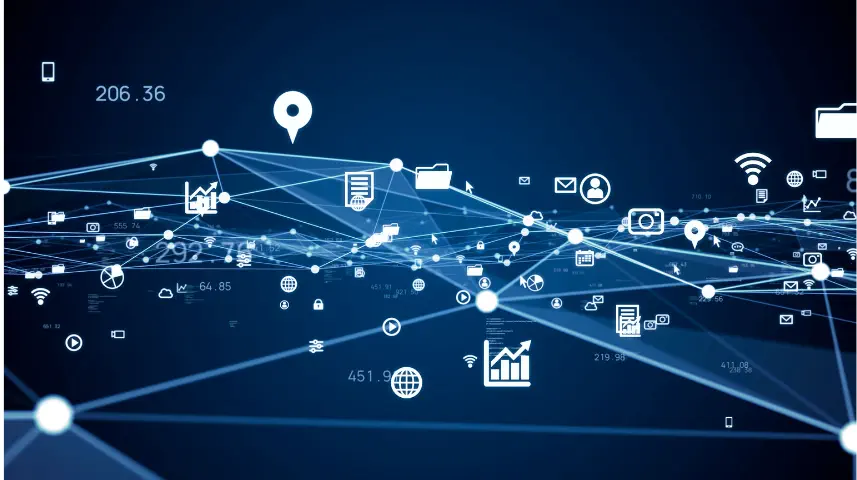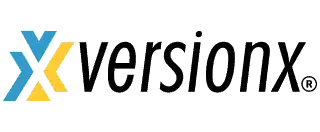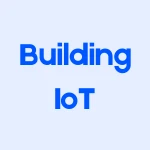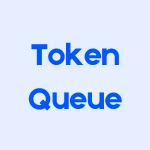
Digital Transformation in Facilities: Challenges And Solutions
Digital transformation is a broad, strategic change in any organization. It involves integrating digital technologies into all areas of business, thereby, changing how it operates.
The primary goal of any such transformation is of course delivering value. Example: a manufacturing plant moving from manual monitoring and reactive maintenance to data-driven, predictive, and safer operations across functions and departments leading to efficiency gains and cost savings.
Even though digital transformation can be a powerful driver of growth, the process is not always smooth. Unlike a simple technology upgrade, it touches processes, culture, and people - meaning resistance to change and unforeseen challenges are common.
Digital transformation in these areas helps businesses move from reactive management (firefighting problems as they come) to proactive and predictive management (anticipating and preventing issues), save time, and reduce costs.
Industries differ a lot in how well they’ve adopted digital transformation. Some have made huge gains, others are still catching up, and some have struggled or failed due to structural issues.
In our experience of more than a decade of enabling digital transformation in businesses across industries, we’ve observed that despite the necessary mandate - leadership buy-in, budget, and intent - companies still face major challenges. And the reasons could be internal to the company or external.
In the areas of facilities, admin, energy consumption, safety and security, it is even more challenging. Even so, the benefits are huge. Digital transformation in these areas helps businesses move from reactive management (firefighting problems as they come) to proactive and predictive management (anticipating and preventing issues), save time, and reduce costs.
In this blog, we discuss the major issues faced by the companies in their digital transformation journey in these areas. We also share how these challenges offer more opportunities than problems in the very short to long run.
1. Legacy Systems And Hardware
Many buildings still rely on analog or semi-digital systems. Existing CCTV, access control, HVAC, or energy meters may not integrate easily with digital platforms.
However, modern technology provides connectors (IoT gateways) and software bridges (APIs) that make it possible for older systems to be integrated into new digital platforms. Example: instead of monitoring CCTV on one screen, HVAC data on another, and access logs in a different system, all information can now be displayed in a single dashboard.
This integration reduces the need for manual monitoring across multiple systems and helps facility or security managers make faster, more informed decisions, improving efficiency overall.
2. Data Silos And Visibility Gaps
Energy consumption data, facility usage data, visitor logs, and security alerts often sit in separate systems. Without integration, companies can’t get a “single pane of glass” view.
A modern IoT-based unified system such as VersionX’s unified platform brings together data from energy, safety, visitor logs, and facilities creating a single-pane-of-glass view. This enables real-time insights, predictive maintenance, and smarter decision-making.
3. Employee Resistance
A major hurdle to digitization of on-ground processes is resistance from blue collared workers. Facility staff, security guards, and admin teams “may” resist using new digital dashboards or mobile apps.
However, this challenge can easily be overcome with easy-to-use mobile apps, automated alerts, and dashboards that reduce repetitive tasks. Intuitive and a simple, clean UI is the key.
Sooner than later, digitization frees up time for higher-value work and increases job satisfaction.
4. Skill Gaps
One of the challenges to digitization is upskilling of the workforce. Proper training is necessary if facility managers and admin staff are to operate IoT dashboards, digital access systems, or analytics tools.
Training and enabling teams with digital tools creates a more tech-savvy workforce. Facility and admin teams evolve into digital operations managers.
5. Data Security Concerns
Smart building systems, IoT sensors, and digital access control create new attack surfaces. Example: Hacked smart locks or HVAC systems could compromise safety.
Modern digital access systems, encrypted IoT devices, and AI-based surveillance increase protection against physical and digital threats. This also enables companies to gain better compliance with global security standards.
6. Compliance & Regulatory Challenges
Safety and security systems must comply with fire safety, occupational health, and local laws. Digital transformation must align with these, or it risks non-compliance.
Automated logs, real-time monitoring, and digital reporting make it easier to meet fire safety, occupational safety, and data protection regulations. The result: less manual paperwork, faster audits.
7. Cost & ROI Questions
Smart lighting, energy monitoring, AI-driven surveillance — all require upfront investment. Companies may struggle to justify ROI if savings aren’t immediate or visible.
At the same time, smart lighting, HVAC optimization, and energy analytics lower utility bills. Automated visitor management and digital workflows reduce admin overhead. Overtime, ROI becomes visible in reduced costs + increased efficiency.
8. Vendor Lock-in And Fragmentation
Many solutions are proprietary and don’t integrate well with others. Example: one vendor for lifts, another for energy, another for access control. This fragmentation makes enterprise-wide integration difficult.
Many new solutions, like those offered by VersionX in a single platform are open-standard and interoperable, reducing vendor lock-in. We give companies flexibility to scale and adopt best-in-class tools.
9. Scalability
A pilot project, such as smart energy monitoring in one office, may succeed, but scaling across multiple facilities seems quite a different affair. It is complex and time-consuming.
However, with cloud-based platforms, once a pilot succeeds, say, smart energy monitoring in one facility, it can be rolled out enterprise-wide with minimal effort. Cloud-based platforms make scaling seamless.
10. Balancing People & Automation
Automated visitor management, digital access, and AI-driven surveillance are powerful. But companies must balance them with human oversight to maintain trust, privacy, and accountability.
Digital systems handle routine tasks (e.g., entry approvals, energy monitoring, CCTV scanning). And this is necessary just so humans focus on judgment-based tasks (e.g., incident response, guest experience, crisis management).
The Biggest Challenge: Lack of Expertise & Ecosystem Maturity
Successful digital transformation depends not just on internal readiness but also on external partners such as system integrators, vendors, consultants, and third-party solution providers. In many industries, especially in facilities, admin, energy consumption, safety and security, the ecosystem is still immature, with limited expertise or fragmented offerings.
This often slows down projects or forces companies to settle for fragmented solutions despite leadership intent and budget.
The opportunity here lies in partnering with providers who bring end-to-end expertise, proven frameworks, and ready-to-integrate solutions.
Where VersionX Fits In
At VersionX, we specialize in solving this exact problem. With over a decade of experience across industries, we provide integrated digital transformation solutions in facilities, admin, safety, and security.
Our platforms are built to work with both new and legacy systems, ensuring businesses don’t have to compromise or wait for the ecosystem to “catch up.”
A strong partner to our customers, we act as both guide and enabler, bridging gaps between legacy infrastructure and modern digital platforms.
Conclusion
Digital transformation is rarely a straight path—it’s more a journey than a project. Companies must deal with legacy systems, shifting employee mindsets, and constant balancing between day-to-day operations and long-term digital goals.
Yet, despite (or because of) its complexity, digital transformation is a gradual build-up—each stage creating a stronger, smarter, and more agile organization. It requires persistence, adaptability, and leadership that can navigate uncertainty.
Ultimately, while not straightforward, the journey often proves rewarding, unlocking new efficiencies, innovations, and opportunities for growth.






